Igneous Rocks
Back to the GEOL 102 Homepage
Igneous RocksAdditional ReadingsMotivation: The Sierra Nevada MountainsChapter Theme: Chemical DifferentiationUnderstanding the Chapter ThemeWhere do we find decompression melting?What is "flux melting" and where do we find it?Crystallization of MeltsWhat is Bowen's Reaction Series ... Naming Igneous RocksCrystallization and Silica-tetrahedra BondingPartial Melting & Chemical DifferentiationWhat name would you give to these rocks?Relating Plate Tectonics to Igneous Rock TypesOther Resources
Additional Readings
Please read the chapter Igneous Dikes, taken from a book called The Story of the Earth in 25 Rocks. The material overlaps both CH 3 and CH 4.
Motivation: The Sierra Nevada Mountains
How do we get batholiths - large aggregations of plutons (igneous rocks) like the Sierra Nevada Mountains?
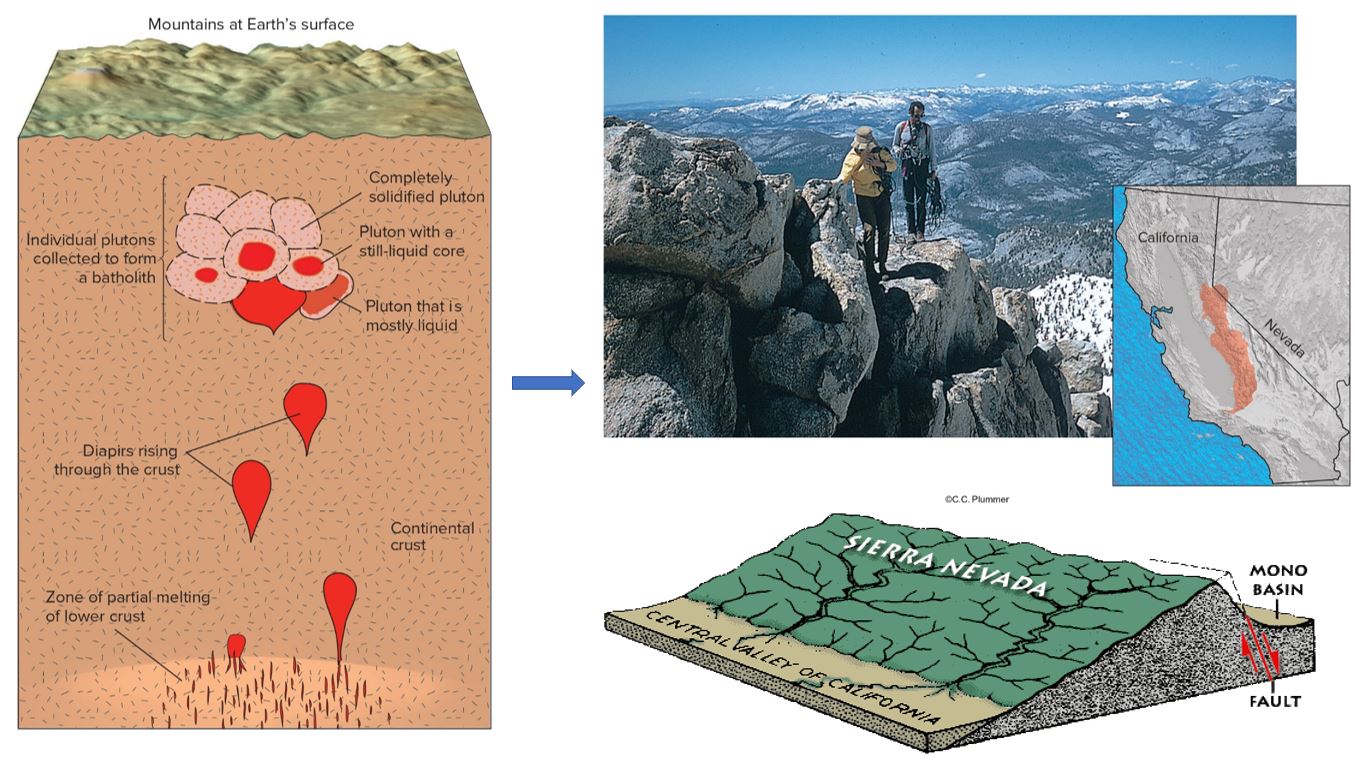
Chapter Theme: Chemical Differentiation
Igneous rocks are the result from solidification of melts in the crust and upper mantle. A wide variety of mineral compositions are observed in these rocks.
How do we get such a variety of compositions?
- Could the crust and mantle have distinct "reservoirs" of distinct mineralogical/chemical composition?
- Is the mineralogical/chemical composition of the crust and upper mantle distributed randomly, and so we expect to find the these distinct igneous rock compositions in random locations?
- Other ideas?
Understanding the Chapter Theme
In the subsections below several key ideas regarding how melt is generated in the earth and how solidification processes work are explored. It is important to note that by the term melt we generally mean partial melt of the geologic materials in the crust and upper mantle rather that a complete melting of the material. Speaking very colloquially, think of it as gooey chocolate chips within the solid matrix of a chocolate chip cookie, or a "mushy/slushy" material.
Where do we find decompression melting?
The figure below conveys the idea of decompression melting:
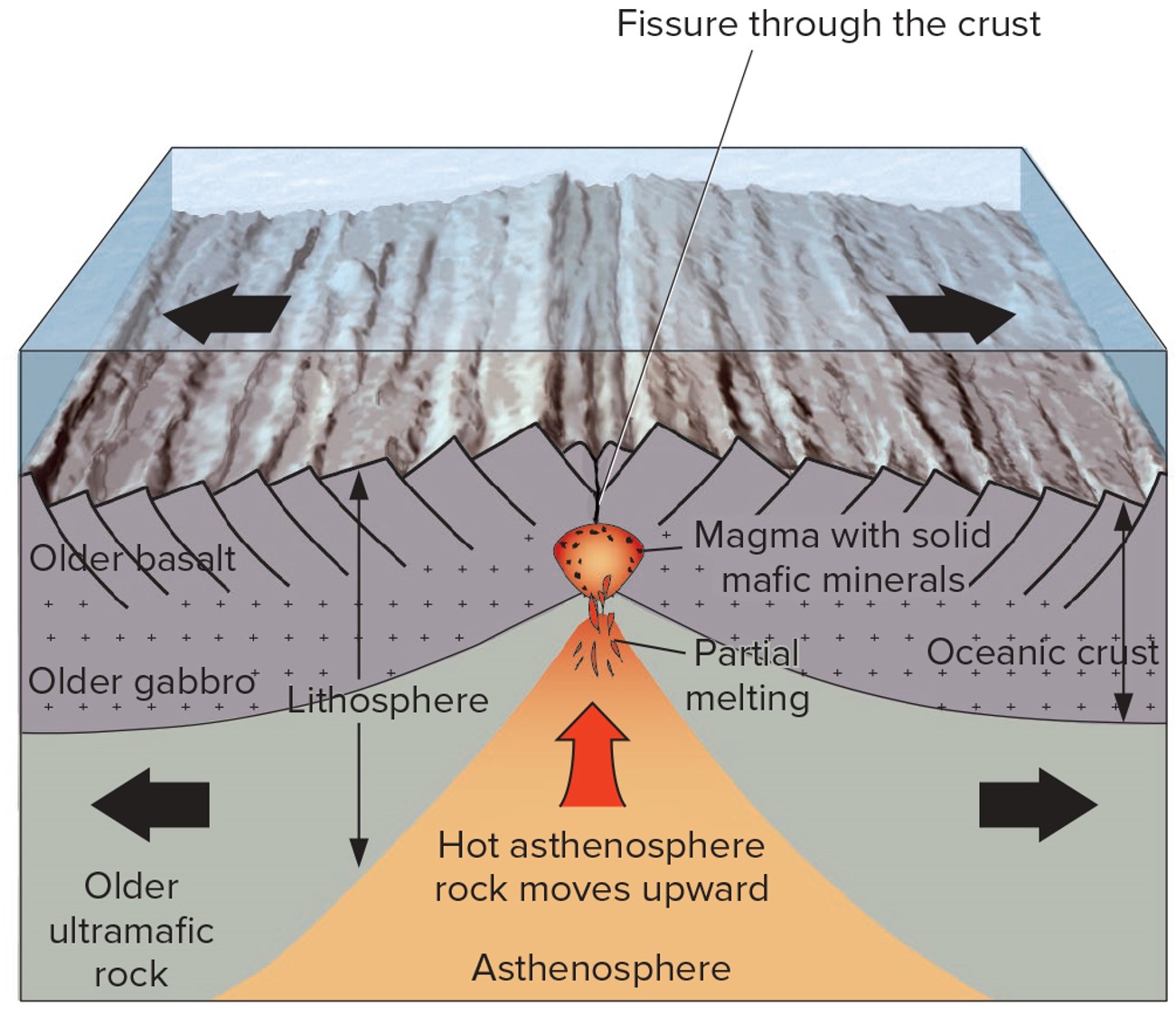
Corresponding to the figure ↑ above ↑ is the figure ↓ below ↓ . Make sure you can understand the connection.

What is "flux melting" and where do we find it?
Below is a figure you should study and study and ... study ... the colors and their shades are important to telling the story.
In the figure below we see see how the tectonic setting of an oceanic-continental convergent boundary (a subduction zone) will generate melts.
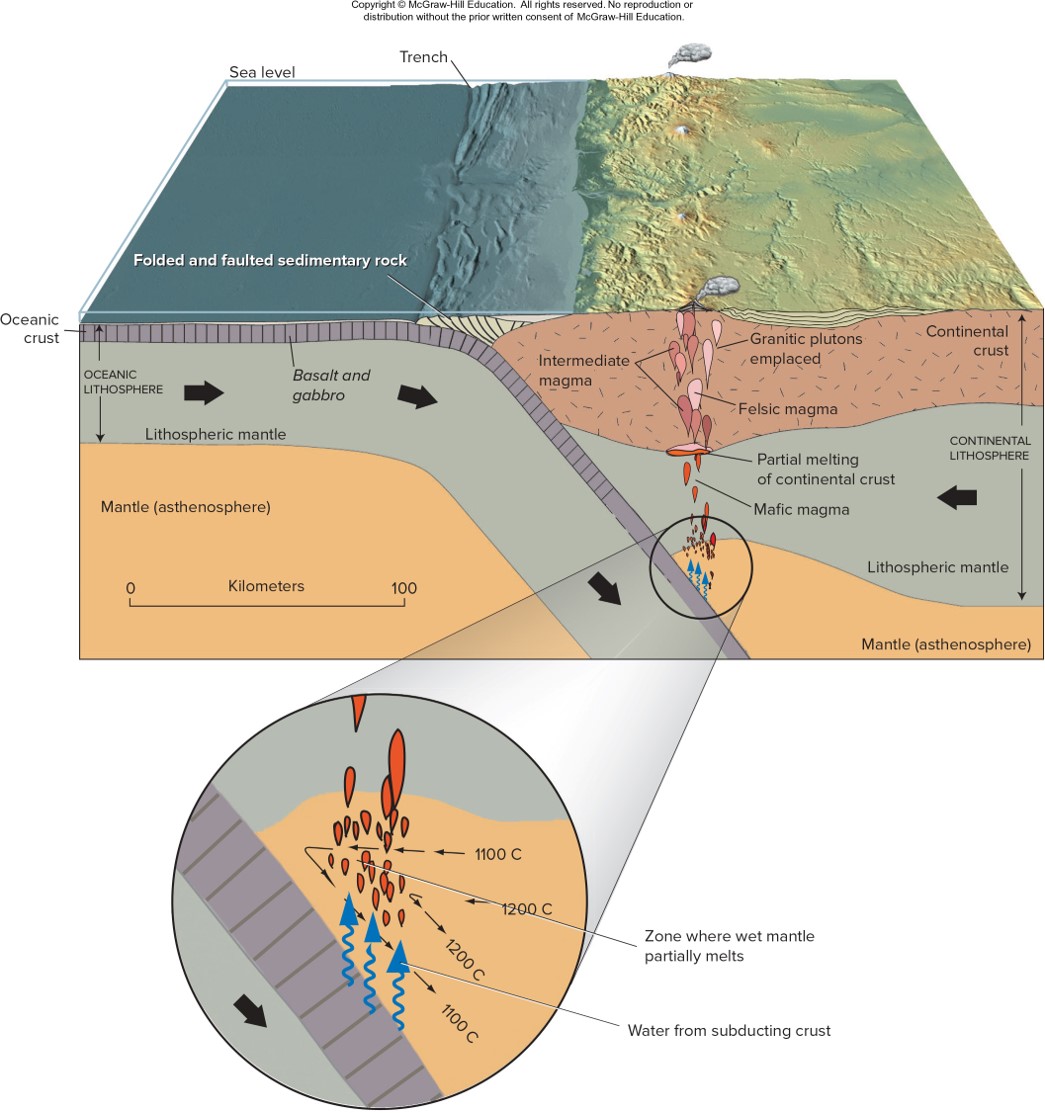
Now compare decompression vs flux melting in the figure below:
Crystallization of Melts
Now that we've generated melts in the earth, how do they solidify? The melts will solidify into igneous rocks made up of various minerals.
Note: The more specific names for "melts" is magmas (if internal) or lavas (if external). Magmas form magma chambers and then plutons when solidified. Lavas flow on the surface until they crystallize or solidify.
Question: Do the various minerals that solidify all form at the same time?
What is Bowen's Reaction Series ...
... and what is it trying to tell us about melting, and crystallization?
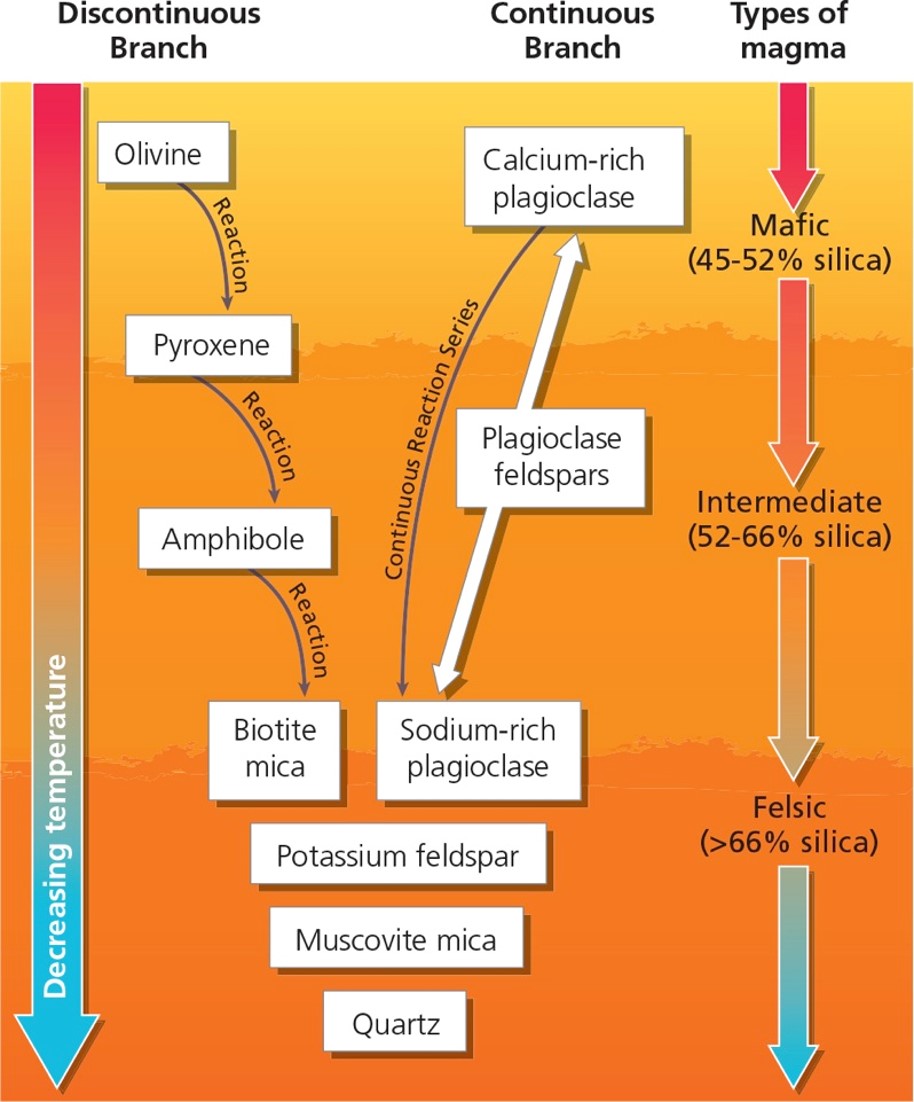
Naming Igneous Rocks
Once the partial melts (magmas/magma-chambers, lavas) have solidified into an igneous rock, they have a certain mineralogical composition. The set of minerals, and their proportion, in the rock and their texture (coarse-grained or fine-grained).
Below is a similar chart just to see a variation. In particular in the chart ↓ below ↓ you can see that the ultramafic rock peridotite usually contains the mineral class of pyroxene (we looked at the example of augite). This might not be obvious from the figure above.
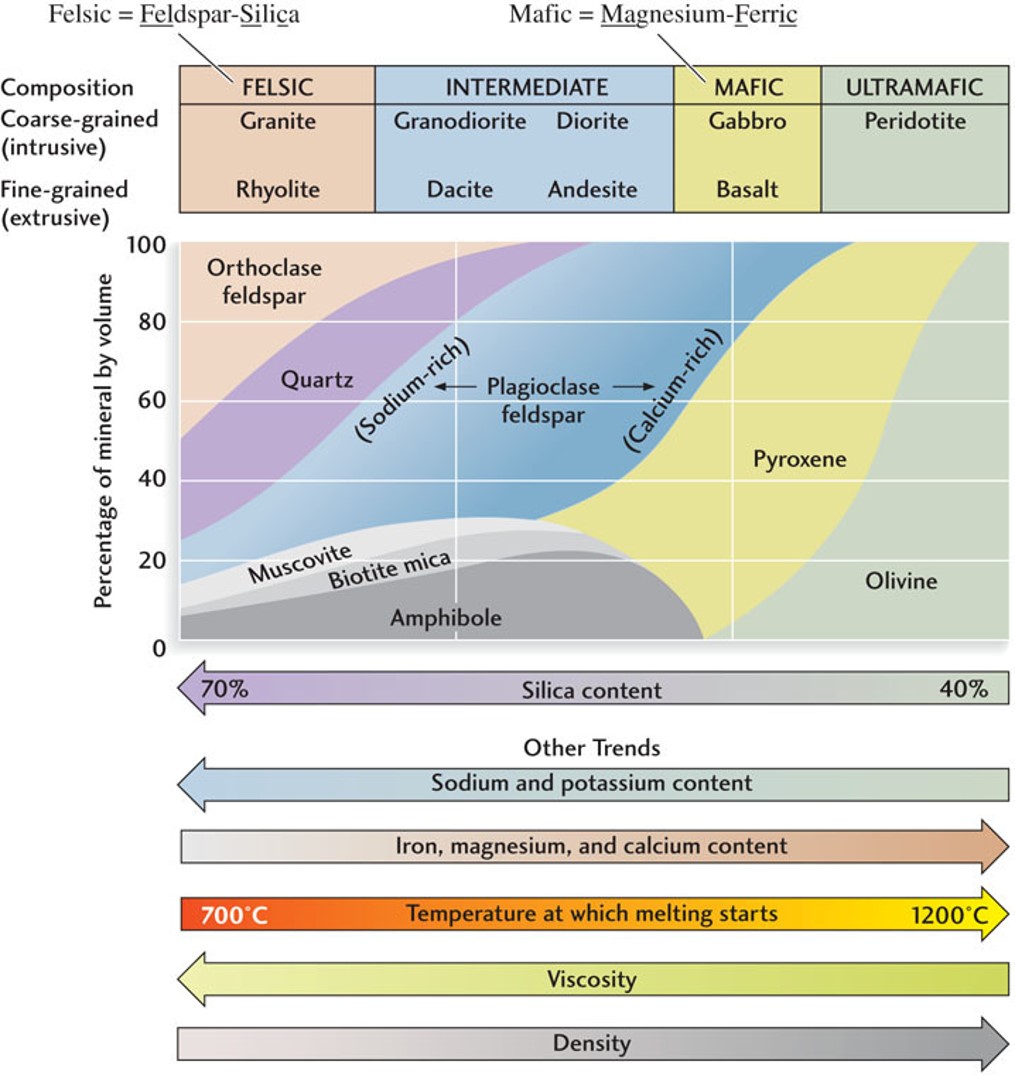
What are some of the take-home messages can you get from these igneous rock naming charts?
Crystallization and Silica-tetrahedra Bonding
How do the silica tetrahedra in different minerals affect melting/crystallizing temperature?
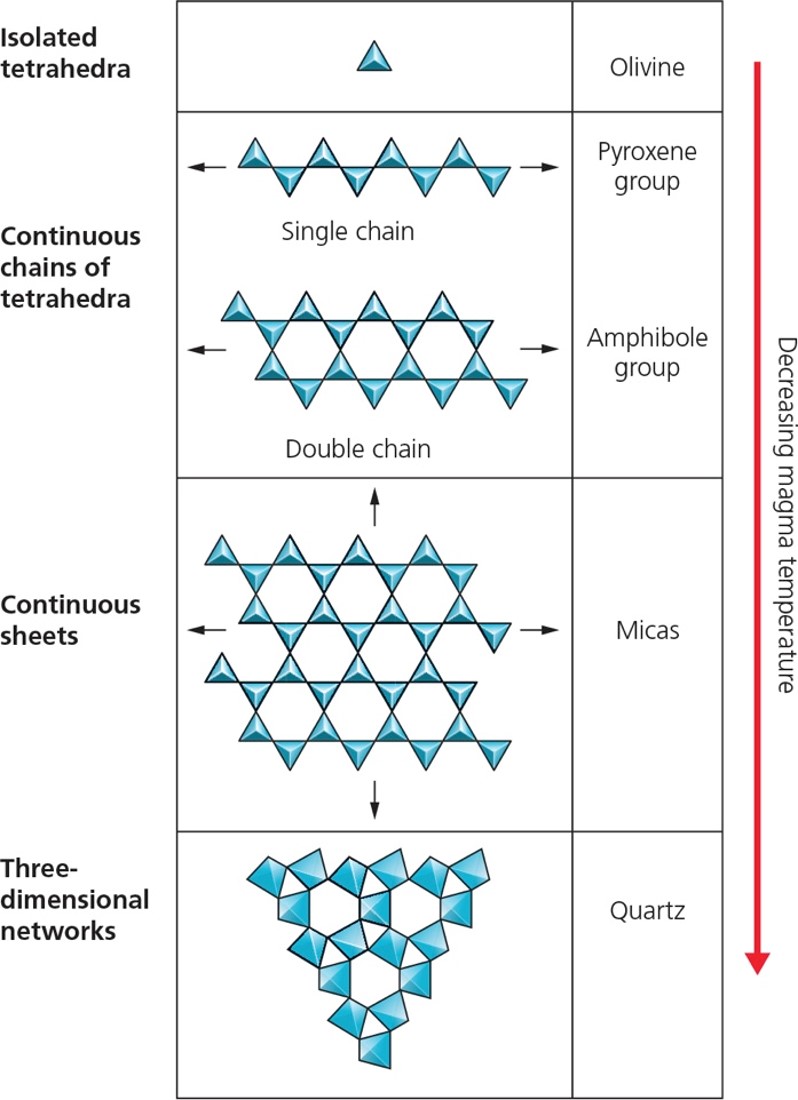
Partial Melting & Chemical Differentiation
How does partial melting work? How does it relate to chemical differentiation?

What rock compositions is the oceanic crust made of?
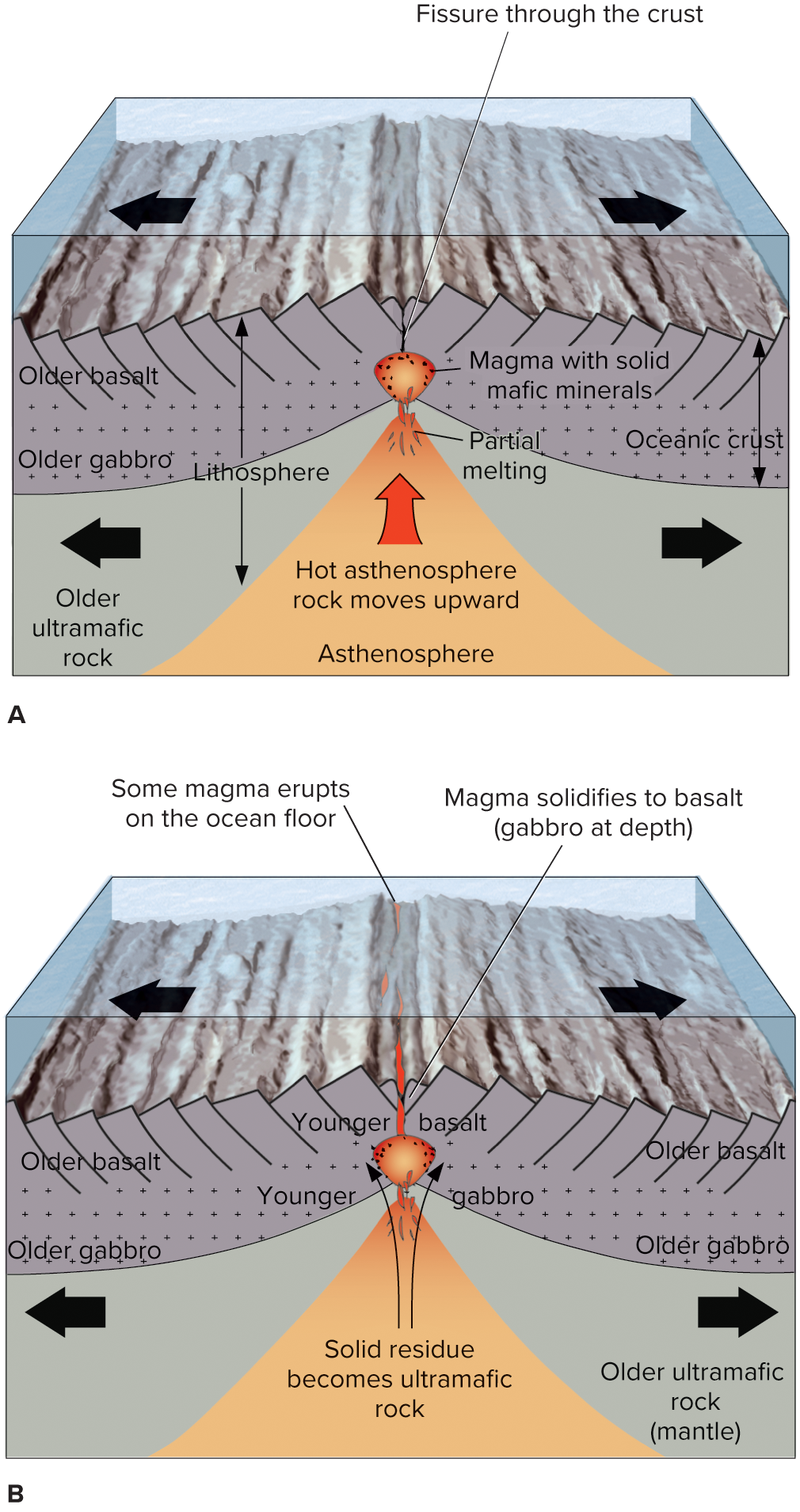
What name would you give to these rocks?
Oceanic Crust Rocks:
Peridotite - the upper mantle. Think about the plate tectonic process that can differentiate this chemically all the way to granite
In this tweet you can see a markup of the minerals in a rock similar to the above sample (shown below):
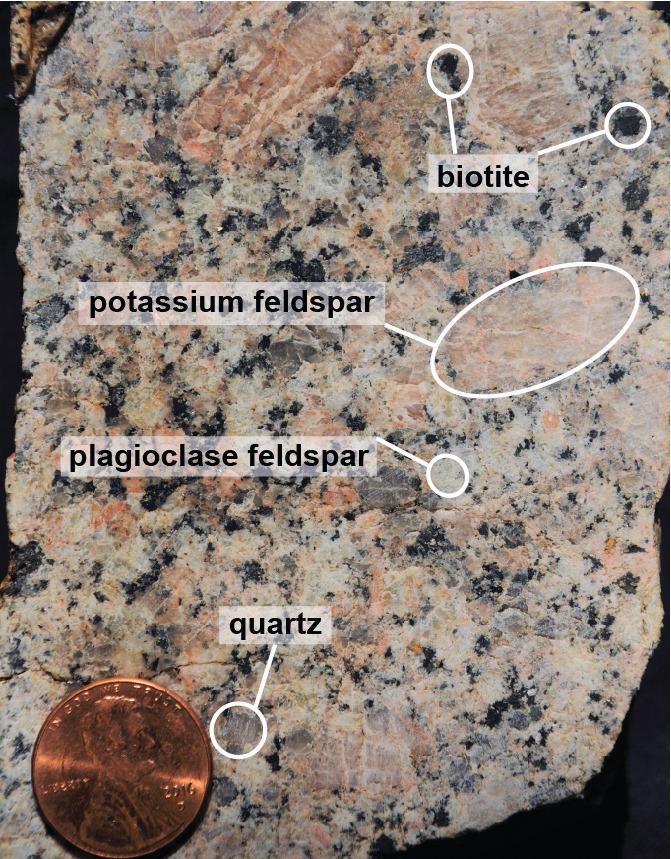
Relating Plate Tectonics to Igneous Rock Types
Note how the chemical differentiation processes are playing out in the various stages.
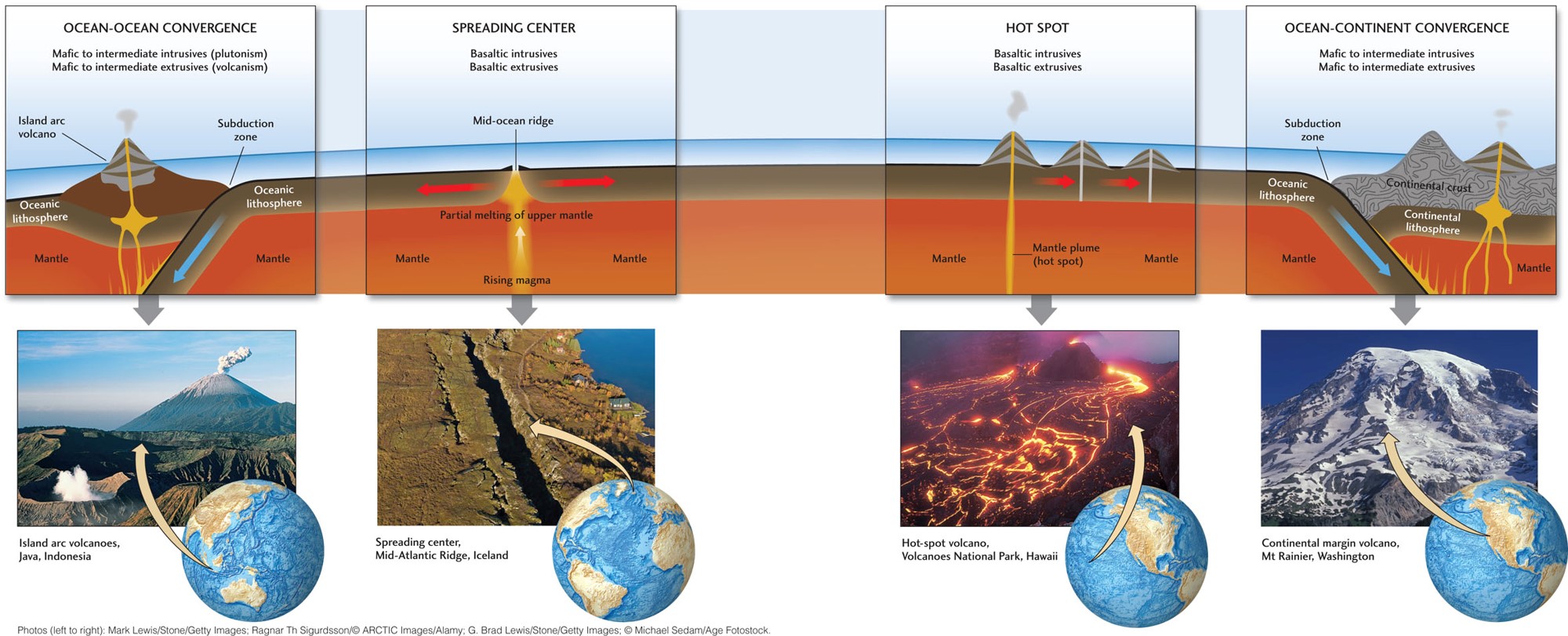
Other Resources
This site](https://omg.georockme.com/home) has an Igneous Rocks ID guide.
Some Questions to Ponder: please take a look at the following summary questions
Slide sets (PowerPoint files. As usual, recall that these are not linear and meant for primary studying. But I may refer to various figures in class, so here they all are.)